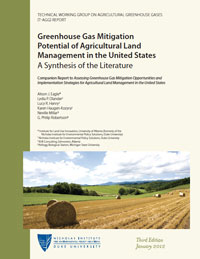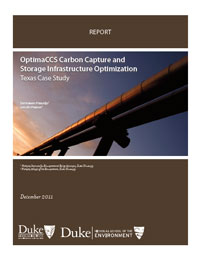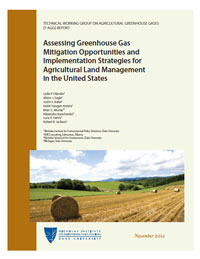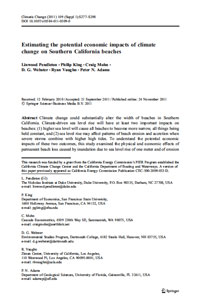Publications
Greenhouse Gas Mitigation Potential of Agricultural Land Management in the United States: A Synthesis of the Literature (Third Edition)
This document, now in its third edition, is a comparision report to the T-AGG report Assessing Greenhouse Gas Mitigation Opportunities and Implementation Strategies for Agricultural Land Management in the United States. The third edition updates the side-by-side comparision of the biophysical greenhouse gas mitigation potential of 42 agricultural land management activities with newly available and previously unincluded data from field experiments, modeling, and expert review. Activities with sufficient research estimates of mitigation potential are now all derived from original individual data points of side-by-side experiments (previous editions included expert and modeling estimates and applied different weighting factors).
The Net Global Effects of Alternative U.S. Biofuel Mandates: Fossil Fuel Displacement, Indirect Land Use Change, and the Role of Agricultural Productivity Growth
One of the declared objectives of U.S. biofuel policy is the reduction of greenhouse gas (GHG) emissions from fossil fuel combustion, but many studies have questioned whether such a reduction would actually occur and, if so, how large it would be. This report describes the global market, land use, GHG emissions, and nitrogen use impacts of the U.S. Renewable Fuel Standard (RFS2) and several alternative biofuel policy designs, which differ in terms of mandate magnitude and feedstock composition, over the 2010–2030 period.
Climate Change Mitigation and Agriculture
A new book features two chapters on reducing agricultural greenhouse gas emissions penned by researchers at the Nicholas Institute for Environmental Policy Solutions—Brian Murray and Lydia Olander. The 456-page book reviews the state of agricultural climate mitigation globally and focuses on the design and implementation of activities to reduce emissions and increase carbon storage.
OptimaCCS Carbon Capture and Storage Infrastructure Optimization: Texas Case Study
The use of carbon capture and storage (CCS) in the United States will allow coal-fired power generation to remain a major component of the nation’s energy mix while also reducing its carbon emissions. The cost of capturing carbon dioxide (CO2) will affect the deployment of CCS, as will the costs for CO2 pipeline transport and underground injection. Transportation and storage costs can be minimized, however, by optimizing the design of the transport system. This report examines how a software program created at Duke, OptimaCCS, maps out cost-efficient options for overall CCS network design, including pipeline routes, necessary pipe diameters and lengths, efficiencies from using shared pipelines, and the impact of sequestration costs.
Profiling Local Climate Change Governance in the Southeastern United States
While other regions have taken a more proactive approach, state and federal government officials and privately owned utilities have largely dismissed the idea of climate and energy policies in the southeastern United States. In this environment, many cities have developed climate and sustainability programs independent of state action. In the summer of 2011, the Nicholas Institute for Environmental Policy Solutions surveyed Southeastern cities with populations greater than 100,000 on their sustainability, climate, and energy policies and practices. This report presents the results of that survey, which reflect how local governments in the region are articulating goals, exercising influence and authority, and planning and implementing policy. The research revisits many of the topics analyzed in a similar 2010 Nicholas Institute report, and it provides a glimpse at the direction of local governments in the Southeast.
Distribution of Emissions Permits to the U.S. Pulp and Paper Sector under Alternative Output-Based Allocation Schemes
Under a cap-and-trade climate policy, emissions allowances—tradable rights to emit a fixed amount of greenhouse gases—become scarce and valuable resources that change the economic incentives to implement more energy-efficient processes and energy management practices, and to select fuels with lower carbon content. A key question accompanying the design of any such policy is how to allocate these allowances. This paper examines how key design elements and industry characteristics affect the distribution of allowances to U.S. pulp and paper firms under three variations of a proposed output-based allocation program—the American Power Act’s emissions allowance rebate program.
Myths and Facts About Electricity in the U.S. South
This paper identifies six myths about clean electricity in the southern United States. These myths are either propagated by the public at-large, shared within the environmental advocacy culture, or spread imperceptibly between policy makers. Using a widely accepted energy-economic modeling tool, the paper exposes these myths as half-truths and the kind of conventional wisdom that constrains productive debate. In doing so, it identifies new starting points for energy policy development.
Assessing Greenhouse Gas Mitigation Opportunities and Implementation Strategies for Agricultural Land Management in the United States
Approximately 6% of greenhouse gas emissions in the United States come from agriculture. This number could be reduced through the use of on-farm management practices, such as switching to no-till, reducing fallow, managing species composition on grazing lands, and adjusting management of nitrogen fertilizer. Efforts are under way by government, industry, and others to incentivize such practices by creating new business opportunities or revenue for farmers and ranchers. This assessment reviews a wide range of agricultural practices and provides a roadmap and resource for programs and initiatives that are designing protocols, metrics, or incentives to engage farmers and ranchers in large-scale efforts to enhance GHG mitigation on working agricultural land in the United States.
Estimating the Potential Economic Impacts of Climate Change on Southern California Beaches
Climate change could substantially alter the width of beaches in Southern California. Climate-driven sea level rise will have at least two important impacts on beaches: (1) higher sea level will cause all beaches to become more narrow, all things being held constant, and (2) sea level rise may affect patterns of beach erosion and accretion when severe storms combine with higher high tides. To understand the potential economic impacts of these two outcomes, this study examined the physical and economic effects of permanent beach loss caused by inundation due to sea level rise of one meter and of erosion and accretion caused by a single, extremely stormy year (using a model of beach change based on the wave climate conditions of the El Niño year of 1982/1983.)
The impact of climate change on California’s ecosystem services
Ecosystem services play a crucial role in sustaining human well-being and economic viability. People benefit substantially from the delivery of ecosystem services, for which substitutes usually are costly or unavailable. Climate change will substantially alter or eliminate certain ecosystem services in the future. To better understand the consequences of climate change and to develop effective means of adapting to them, it is critical that we improve our understanding of the links between climate, ecosystem service production, and the economy. This study examines the impact of climate change on the terrestrial distribution and the subsequent production and value of two key ecosystem services in California: (1) carbon sequestration and (2) natural (i.e. non-irrigated) forage production for livestock.










